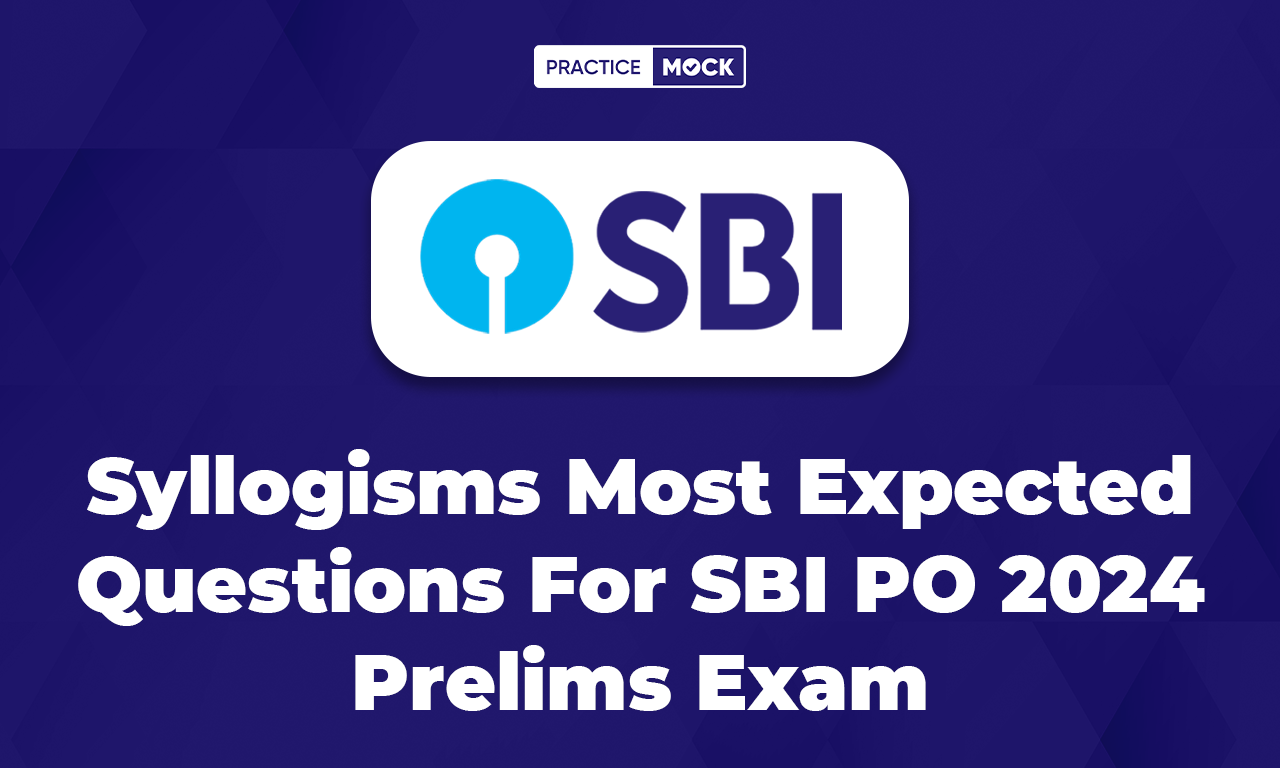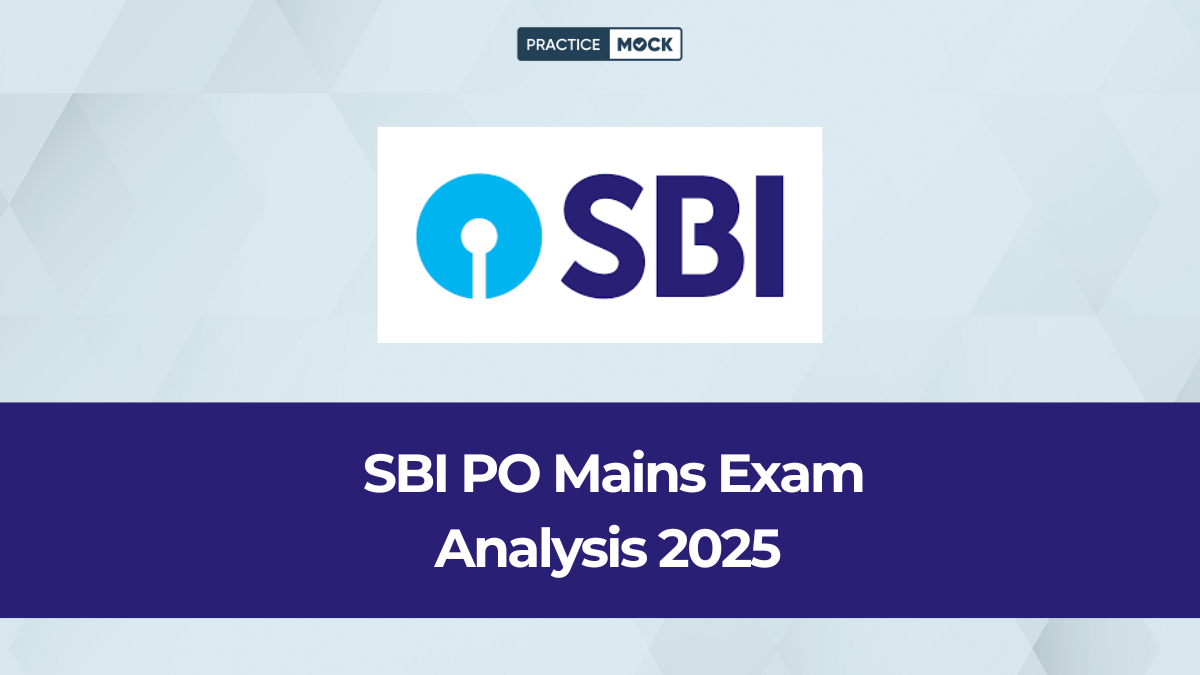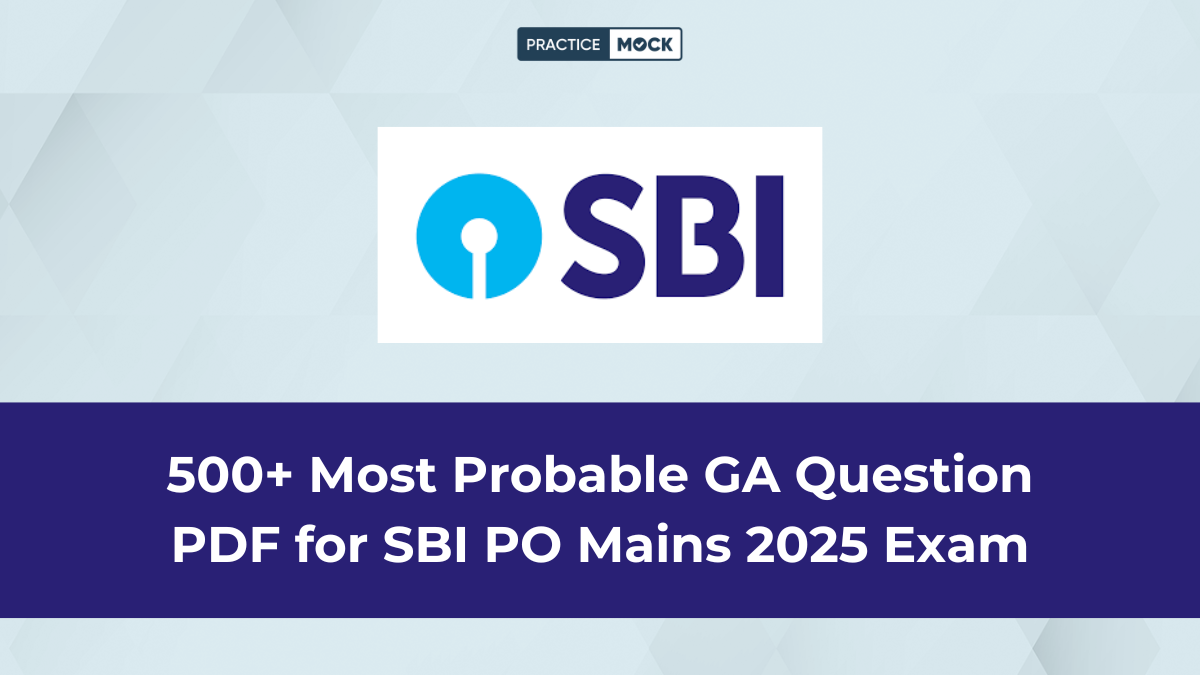Syllogisms Most Expected Questions For SBI PO 2024 Exam


Syllogisms Most Expected Questions for SBI PO Exam: Syllogisms is a topic that belongs to the reasoning section of the SBI PO exam. It is considered one of the simple topics. Candidates can expect at least 2-6 questions from this topic in the SBI PO prelims exam. The difficulty level of questions can be expected from easy to moderate in the exam. In this blog, we have provided the syllogims most expected questions for the SBI PO exam with the answer and explanation, and a basic concept of the syllogisms. Candidates are advised to first read and understand the concept and then try to solve the questions provided in the PDF.
Concept of Syllogisms
A syllogism is a topic that belongs to the reasoning section in which a conclusion is drawn from two given or assumed propositions (premises). A syllogism consists of:
- Major premise: A general statement or rule.
- Minor premise: A specific statement or fact that falls under the major premise.
- Conclusion: The deduction made from the two premises.
Example:
- Major premise: All humans are mortal.
- Minor premise: Socrates is a human.
- Conclusion: Socrates is mortal.
Types of Syllogism
There are many types of syllogisms, we have provided some most common types of syllogisms:
- Categorical Syllogism: This is the most common form, where both premises are statements about categories (e.g., all, some, none).
- Example:
- Major premise: All mammals are animals.
- Minor premise: All dogs are mammals.
- Conclusion: All dogs are animals.
- Example:
- Hypothetical Syllogism: In this form, one premise is a conditional (if-then) statement.
- Example:
- Major premise: If it rains, the ground will be wet.
- Minor premise: It is raining.
- Conclusion: The ground will be wet.
- Example:
- Disjunctive Syllogism: One premise is a disjunction (either-or statement).
- Example:
- Major premise: Either the sun is shining or it is raining.
- Minor premise: The sun is not shining.
- Conclusion: It is raining.
- Example:
Most Expected Important Questions PDF for Syllogisms
Question 1: In the question below there are three statements followed by two conclusions I and II. You have to take the three given statements to be true even if they seem to be at variance from commonly known facts and then decide which of the given conclusions logically follows from the three statements disregarding commonly known facts.
Statements:
Only a few round is triangle
Only triangle is rectangle
Some round is session
Conclusions:
I. Some triangle is not session
II. Some rectangle can be session
A) Only conclusion I and conclusion II follow
B) Only conclusion II follows
C) Only conclusion I follows
D) Neither conclusion I nor conclusion II follows
E) Either conclusion I or II follows
Question 2: In the question below there are three statements followed by three conclusions I, II and III. You have to take the three given statements to be true even if they seem to be at variance from commonly known facts and then decide which of the given conclusions logically follows from the three statements disregarding commonly known facts.
Statements:
Each letter are word.
Every word is sentence.
No sentence is paragraph.
Conclusions:
I. No letter is paragraph.
II. Some sentence are word.
III. Some word are paragraph.
A) Both conclusion I and conclusion II follow
B) Only conclusion III follows
C) Neither conclusion I nor conclusion II follows
D) Only conclusion II follows
E) All conclusions I, II and III follow
Question 3: In the question below there are three statements followed by two conclusions I and II. You have to take the three given statements to be true even if they seem to be at variance from commonly known facts and then decide which of the given conclusions logically follows from the three statements disregarding commonly known facts.
Statements:
No beat is type.
At least some type are group.
All group are form.
Conclusions:
I. Some type are form.
II. At least some group are beat.
A) Only conclusion I follows
B) Both the conclusions I and II follow
C) Neither conclusion I nor II follows
D) Only conclusion II follows
E) Either conclusion I or II follows
Question 4: In the question below there are three statements followed by three conclusions I, II and III. You have to take the three given statements to be true even if they seem to be at variance from commonly known facts and then decide which of the given conclusions logically follows from the three statements disregarding commonly known facts.
Statements:
At least some boot are shoot.
No shoot is doom.
All doom are boom.
Conclusions:
I. Some boot are boom.
II. Some boom are doom.
III. At least some shoot are boom.
A) Both conclusion I and conclusion II follow.
B) Only conclusion III follows
C) Neither conclusion I nor conclusion II follows
D) Only conclusion II follows
E) All conclusions I, II and III follow
Question 5: In the question below there are three statements followed by two conclusions I and II. You have to take the three given statements to be true even if they seem to be at variance from commonly known facts and then decide which of the given conclusions logically follows from the three statements disregarding commonly known facts.
Statements:
Only few fish are crab.
Some crab are whale.
No whale is shark.
Conclusions:
I. Some fish are shark.
II. All fish are crab.
A) Only conclusion I follows
B) Both the conclusions I and II follow
C) Neither conclusion I nor II follows
D) Only conclusion II follows
E) Either conclusion I or II follows
How to Prepare Syllogism for SBI PO Prelims Exam
- Understand the question: Read the question carefully.
- Draw a Venn diagram: Draw all possible diagrams based on the given statements.
- Follow the question: Follow the question’s sequence while drawing the diagram.
- Analyze the conclusion: Analyze the conclusion from the Venn diagram.
- Check for other solutions: Check for other alternative solutions at the end
| Related Articles on the SBI PO 2024 Exam | |
| SBI PO Exam Pattern 2024 | SBI PO Previous Year Question Paper |
| SBI PO Salary 2024 | SBI PO Syllabus 2024 |
| SBI PO Notification 2024 | SBI PO Cut Off 2024 |
Syllogisms Most Expected Questions For SBI PO Exam FAQs
A syllogism is a topic that belongs to the reasoning section in which a conclusion is drawn from two given or assumed propositions (premises).
Candidates can expect at least 2-6 questions from syllogisms in the SBI PO prelims exam.
Candidates can expect the difficulty level of questions from easy to moderate.
Candidates can get the syllogism’s most expected questions for the SBI PO exam in this blog.
Recent Posts
Attempt Latest Free SSC CGL Practice Quiz 2025
In this blog, we have provided the direct links to the latest free SSC CGL…
SBI to Hire 18,000 Employees in FY 2026, Biggest Recruitment Drive Soon
Here we are providing detailed information for SBI to Hire 18,000 Employees in FY26. Candidates…
BOB Office Assistant Recruitment 2025 Notification Out for 500 Posts
The Bank of Baroda Office Assistant Recruitment 2025 Notification has been released on their official…
RBI Grade A Syllabus 2025, Check Exam Pattern, Topic-wise Weightage
Explore RBI Grade A 2025 syllabus and exam pattern. Check topic-wise weightage for Prelims, Mains,…
IBPS Clerk Salary 2025, Check Basic Pay Scale, Allowances Roles and Responsibilities
The IBPS Clerk salary 2025 is mentioned in the notification pdf. This article covers basic…
IBPS PO Salary 2025, Check Basic Pay Scale, Salary Slip, Allowances Per Month
IBPS PO Salary 2025 has been released along with detailed notification. Check salary structure, job…



